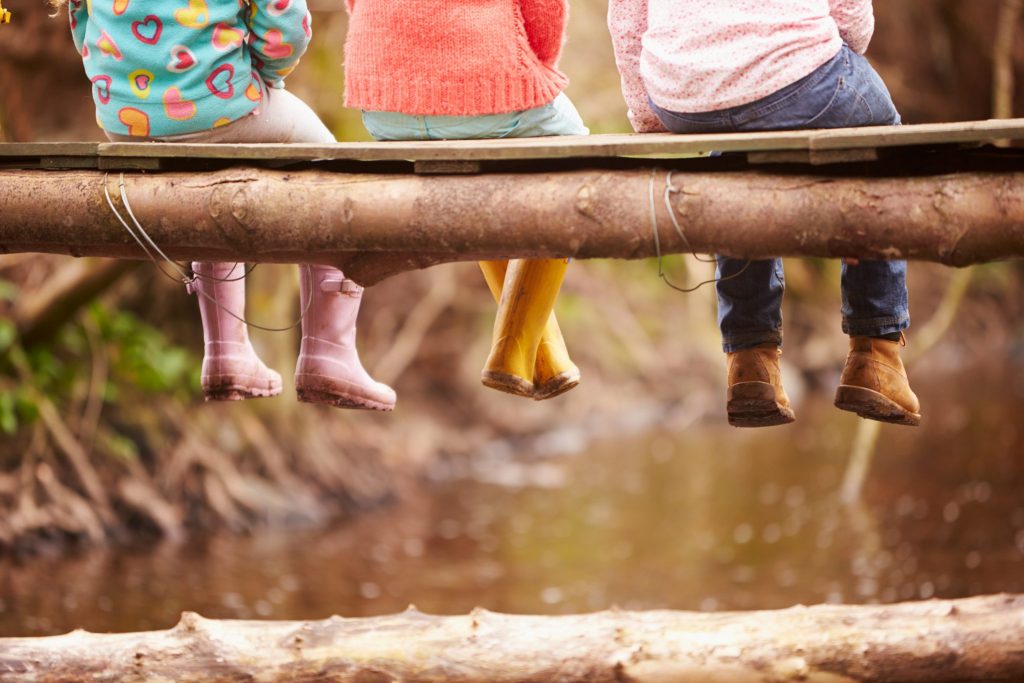Mom, we had lunch in kindergarten today! I had to peel the potatoes, and Sarah chopped them into small pieces. Since today is Monday – the day when we bake bread, we also did it in the kitchen, all together, and it was interesting. It took a long time to clean up, though. The lunch was delicious, and after that, we walked the woods and collected leaves, branches, flowers. We even found mushrooms! Imagine!!! When we went for a walk, we started to sing a poem about the forest, so we inserted new words in the song, those of the things we came across. I prefer fairy tales, and tomorrow we’ll talk about them while we walk. But now I can’t wait for Thursday because we’re going to knit and I’m going to finish my first doll! The teachers say we’ll be weaving next week. What’s weaving, mom?
How many parents hear an answer similar to this when they ask their child a common question “How was it at kindergarten?”. Believe it or not, parents whose children attend the Waldorf kindergarten have this opportunity every day. Waldorf is one of the alternative schools in pedagogy that originated in Germany in 1919. Over the past decade, kindergartens that work by the Waldorf principles begin to open up in our country as well. In short, the Waldorf pedagogy seeks to bring children’s education in harmony with nature, the rhythm of the day, the week, the annual age and the inner rhythm of the child. Meals are healthy and vegetarian, children spend a lot of time in nature and learn how to respect and preserve it. The kindergartens are used only by natural materials-wood, wool, different fabrics, and create an environment where children’s creativity comes to expression.

Now, let’s just imagine a practising spacious kindergarten room. Low wooden shelves are placed along the walls of the room, and there are items of different shapes and colours in the basket. Seemingly very simple things. Cubes, balls, sticks, clips, stickers… In the middle of the room, there is a circle and single- coloured little mats all around. On each of them, there is one child who is focusing on handling items similar to those on the shelves. A teacher is slowly walking between children, watching their work carefully. Children’s movements are calm while they are thoughtfully exploring their materials. As children end playing, they pick up everything they have been playing with and silently, one thing at a time, put everything back in one of those baskets on the shelf. Almost all children finished, except for two girls who are still playing. The other children already cut fruit with their teachers. They are going to have a snack soon!
A large number of you will recognise the features of the Montessori kindergarten in this description. It is also one of the trends in pedagogy that is becoming more and more prevalent. It set out to develop as did Waldorf in the early 20th century, just a little further south, in Italy. Montessori school sees the independence of children as the main goal of education, so the educator is accordingly a careful observer who carefully chooses at what point and to what extent he or she will engage in children’s activities. According to Montessori, space and materials must be simple, practical, transparent, but at the same time carefully selected, each with the specific purpose of helping the child to acquire certain knowledge and master certain skills.
In addition to the fact that these two schools offer an alternative to the common pedagogical approaches, they have other similarities – the child’s personality and uniqueness are fully respected, striving to gain practical skills and handling things with which the child comes into touch in everyday life. Children are stimulated moderately, practicing commitment while their interests and the pace of work are strictly respected. It also encourages their inquisitiveness and curiosity, but also a tendency for order and rhythm. We see that the general objectives of these approaches are somewhat similar, but the path to their realization is certainly different. Therefore, our advice is – explore, learn and consider what the Waldorf and Montessori have to say – and not just them, but other directions and schools. Different views on the complex concept of upbringing and education will certainly enrich your knowledge. But first of all, regardless of the postulates that you respect – explore, discover and consider the nature of your children and all those wonderful potentials it has. 😊




